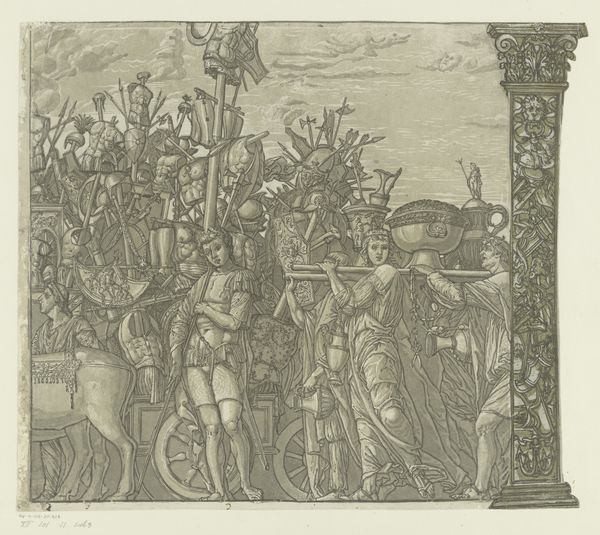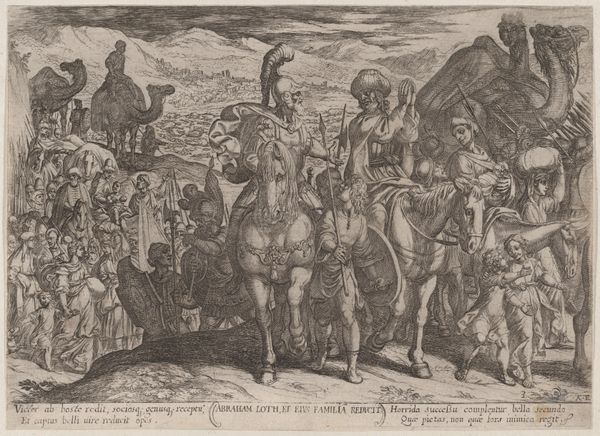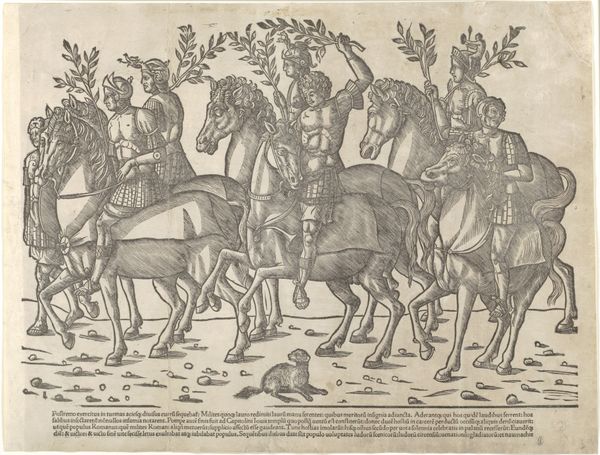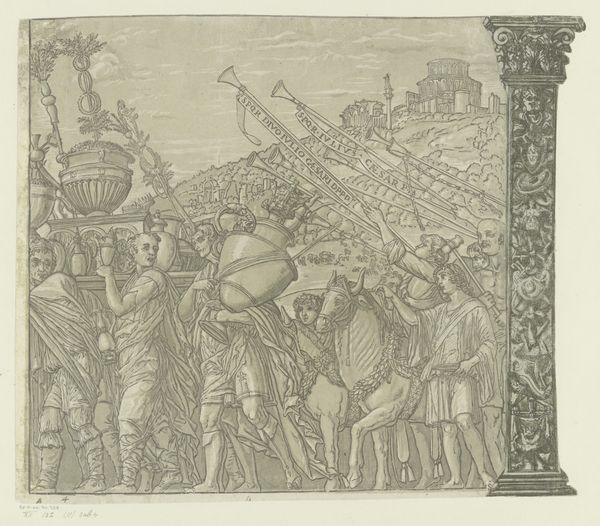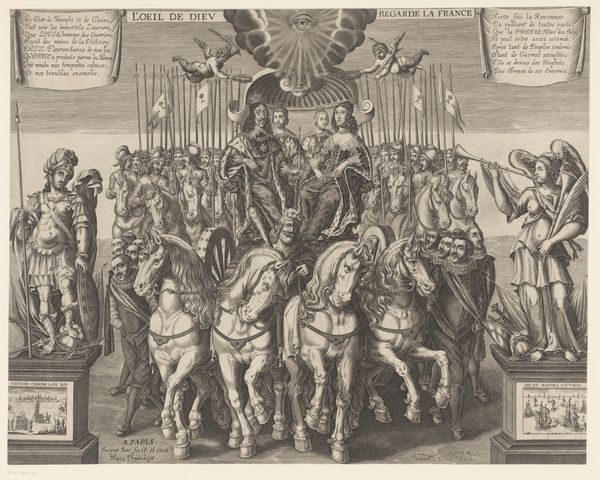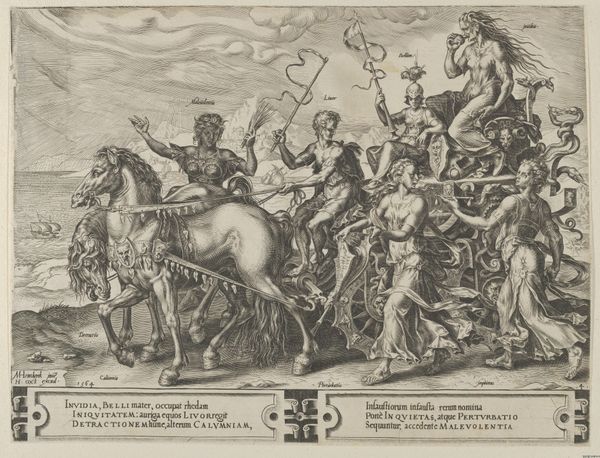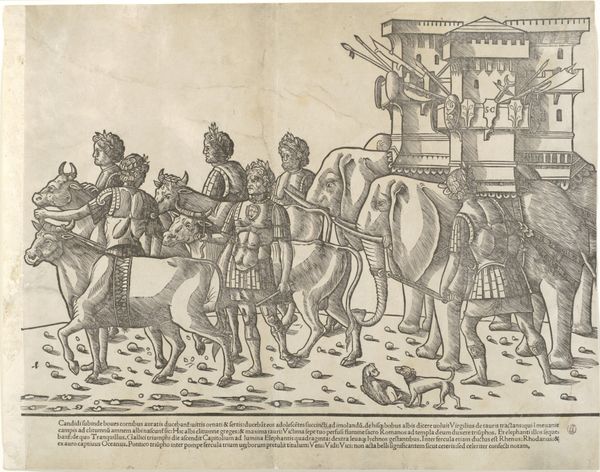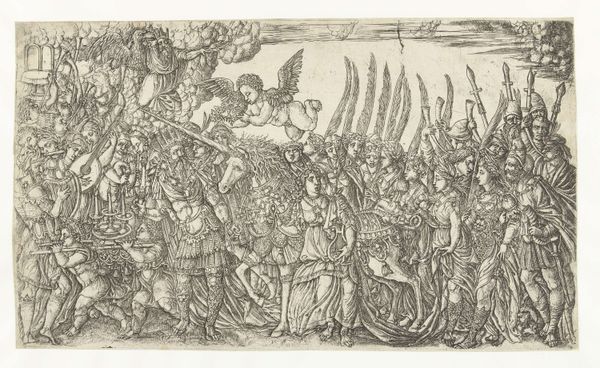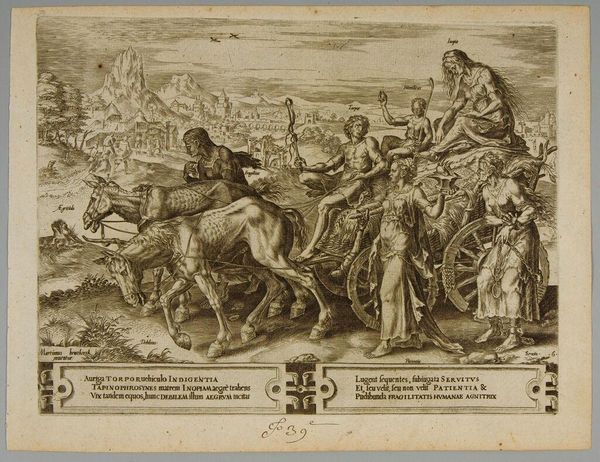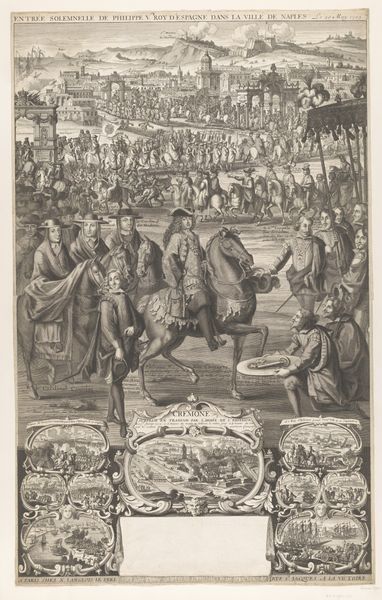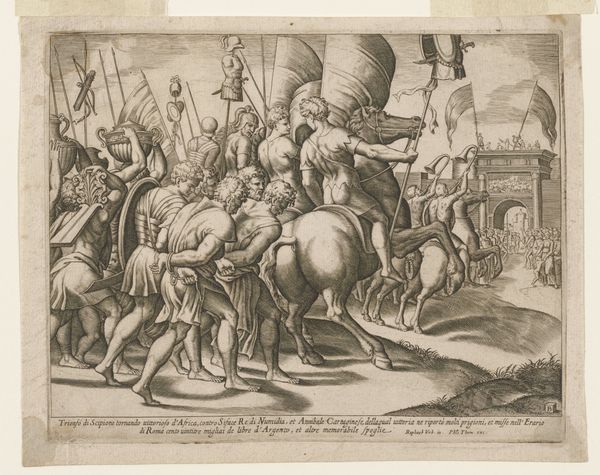
Caesar riding on his chariot, from 'The Triumph of Caesar' 1504
0:00
0:00
drawing, print, engraving
#
drawing
#
narrative-art
#
pen drawing
# print
#
figuration
#
soldier
#
ancient-mediterranean
#
men
#
history-painting
#
italian-renaissance
#
engraving
Dimensions: Height: 13 5/16 in. (33.8 cm) Width: 15 15/16 in. (40.5 cm)
Copyright: Public Domain
Editor: We're looking at "Caesar riding on his chariot, from 'The Triumph of Caesar'," a print made around 1504 by Jacob of Strasbourg. It's an engraving depicting a triumphal procession. I’m struck by the detail rendered through these fine lines and the sheer number of figures – it feels very dense. What formal aspects stand out to you? Curator: Certainly. Observe how the artist uses line to create both form and texture. Note the variations in line weight; heavier lines define the contours of figures and objects, creating a sense of volume, while lighter, finer lines describe the intricate details of clothing, foliage, and the ornamentation on the chariot. Consider how this contrast manipulates our perception of depth. Editor: It's true, the contrast gives it almost a sculptural quality, even though it's a two-dimensional print. But the composition also seems deliberately ordered. Curator: Precisely. The figures are arranged in a carefully structured procession, moving from left to right. Notice how the artist uses subtle variations in the height and pose of the figures to create a dynamic rhythm. The positioning of Caesar himself, elevated on the chariot and holding a scepter, establishes a clear focal point and underscores his power. Does this linearity affect your perception? Editor: I think so; the organization leads my eye and keeps my focus toward the triumphant Caesar as the visual endpoint. I hadn’t considered the rhythm before. Curator: The artist’s skillful use of formal elements enhances the impact of the depicted triumph. It communicates ideas about power through form and composition, a dynamic interplay that is hard to ignore. Editor: Seeing how you parse the formal structures makes it all click for me; the arrangement becomes crucial. Curator: And for me, appreciating the initial impact and seeing you then focus on the piece more analytically completes the understanding.
Comments
No comments
Be the first to comment and join the conversation on the ultimate creative platform.
